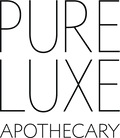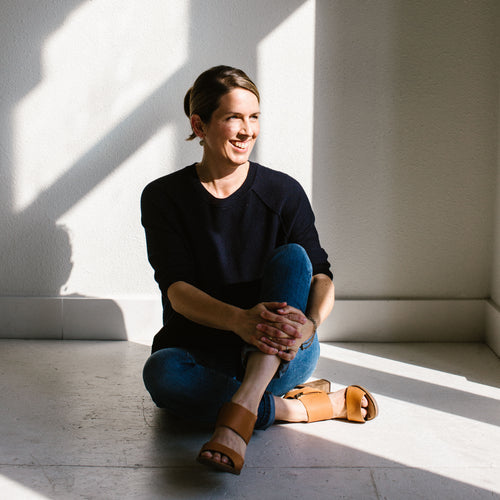Ylang Ylang Essential Oil: Benefits for Skin, Mood & Holistic Health
The scent of ylang ylang (pronounced ee-lang ee-lang in English) is one that’s so impactful it's been called both the “Queen of Perfumes” and the “flower of flowers.” To me it smells like a sensuous, sweet floral with a deep richness that's hard to describe.
Why impactful? It’s more than just a pretty scent. Ylang ylang eases stress, balances skin cells, and sparks romance. Say more, right?! Read on to meet the plant, explore highlights from its intriguing past, and discover how to enjoy its many benefits in your own daily rituals.
From Blooms to Bottle
So what is it, exactly? Ylang ylang essential oil is the concentrated aromatic oil distilled from freshly picked flowers of the Cananga odorata tree.
In the distillation process, pressurized steam passes through the blossoms, releasing the volatile compounds that give the flowers their distinctive scent. As the vapor cools, it separates into two parts: the aromatic essential oil and the aromatic water known as the hydrosol.
Blossoms are typically harvested in the early morning and steam-distilled the same day for peak freshness. It takes a huge volume of flowers to produce a small amount of oil. Some sources estimate that over 100 pounds of flowers (think how many blooms it takes to get to 100 pounds!) are needed to make just two (2!) pounds of essential oil.

Harvested ylang ylang blossoms | Source: Photo by Waldhexe on Komoot.com
 Harvested ylang ylang blossoms | Source: couchwasabi.com
Harvested ylang ylang blossoms | Source: couchwasabi.com
A Tree from the Tropics
This fast-growing, tropical evergreen thrives in the humid heat of Southeast Asia - especially in Indonesia, Malaysia, and the Philippines.
Mature trees can bloom throughout the year, but are especially active during the rainy season. The flowers start lime-green, then unfurl into long, curling, chartreuse petals that look like ribbons. Their perfume is strongest at night, when the tree releases its fragrance to attract its pollinators: nocturnal moths and beetles.

EA Real Agrofarm in the Philippines | Photo by Arwin Soriano, Agriculture.com.ph
A Storied Past
Ylang Ylang has been celebrated for centuries in cultural traditions, ceremonies, beauty recipes, and perfume.
In Indonesia, the flowers were used in traditional medicine, skincare, haircare, and rituals. Blossoms were (and still are) also scattered across the beds of newlyweds as symbols of romance and relaxation.
In the Philippines, flowers were infused into coconut oil to make boori-boori - a fragrant pommade for nourishing and protecting skin. Folklore also tells of a young girl named Ilang whose story of love and longing gave the tree its name.
In parts of Polynesia, women used ylang ylang blossoms to craft romantic potions, Umuhei (floral headdresses or wreaths), and garlands for ceremony and celebration.
💡Traditional names for the tree include: mohokoi (Tonga), moso-oi (Samoa), makosoi (Fiji), lanalana (Hawaii), apurvachampaka (India)
By the 1700s, centuries of regional trade had already carried ylang ylang across much of Asia and the Pacific. European exploration and colonization then extended its reach even farther, introducing the flower and its oil to global markets.
The first recorded distillation of ylang ylang essential oil took place in Manila in the mid-1800s. By the 1860s and 1870s, French colonists established plantations in Reunion and the Comoros Islands, expanding cultivation and trade to meet growing international demand.
Along the way, ylang ylang became a prized ingredient in European perfumery, admired for its lush, sensual aroma and ability to blend beautifully with other florals and spices. One of the most iconic examples is Chanel No. 5, launched in 1921, which features ylang ylang as a signature note. (Note: Chanel No. 5 includes both natural and synthetic ingredients; it's not considered a natural perfume.)

Key locations of ylang ylang production | Source: Landema-Biolandes Group
Modern Production
Today, the Indian Ocean remains the heart of production — especially the Comoros, Madagascar, and Mayotte. It's estimated that between 100 and 120 tons of ylang ylang essential oil are produced each year.
As a commercial crop, it's produced for perfumery, hair and beauty products, and aromatherapy worldwide. The flowers are also still part of their native cultures and can be found in incense, aphrodisiacs, and even candy, beverages, and ice cream.
As demand for ylang ylang has grown, large-scale cultivation has led to deforestation and soil depletion (especially in Madagascar and the Comoros). It’s a reminder of how vital sustainable farming and reforestation efforts are to protect the land, the trees, and the communities who care for them and to safeguard this precious plant for the future.
The Benefits of using Ylang Ylang Essential Oil
My favorite aspect of this oil is the range of therapeutic benefits it offers, both on its own or in combination with other oils in a formula. Here’s a look at how it can support your holistic self-care rituals - for both healthy skin and a calmer mind.
💡 The body takes in essential oils in two main ways: by breathing in their aromatic compounds or by absorbing them through the skin. When applying oils topically, always blend them with a carrier oil to keep the skin protected and balanced.
For the Skin
-
Balancing: Helps regulate oil and moisture levels, making it useful for both dry and oily skin.
-
Clarifying: Its natural antibacterial qualities support clear, calm skin.
-
Protective: Rich in antioxidants that help defend against environmental stress and free radical damage.
-
Soothing: Anti-inflammatory compounds help calm redness and irritation.
For the Mind & Mood
-
Calming: Known to slow the breath and heart rate, easing stress and nervous tension.
-
Balancing: Helps harmonize mood, supporting relaxation and better sleep.
-
Sensual: Celebrated as an aphrodisiac that enhances intimacy.
- Uplifting: Both soothing and gently stimulating — a rare balance that centers and steadies the spirit.
Ongoing Research
Today, researchers continue to explore ylang ylang’s potential. As far back as the 1900s, chemists were studying the essential oil’s possible medicinal applications for malaria, typhus, and gastrointestinal infections. Modern studies show it can help ease anxiety, support mood balance, and may even play a role in metabolic health and blood sugar regulation. Other research is exploring its benefits for skin and scalp care — from dandruff relief to soothing irritation.
It’s worth noting, however, that natural plant research is often overlooked and underfunded compared to pharmaceuticals. Because raw botanicals can’t be patented (and monetized in the same way), there’s less financial incentive to study them extensively. So while the body of evidence is steadily growing, much of ylang ylang’s value still rests in its long tradition of safe, everyday use.
Think of ylang ylang as an ancient remedy that modern science is only just beginning to confirm — even though cultures have long known of its power to calm, balance, and restore.

Cananga odorata flowers | Image source: semilllasunicas shop
Where You'll Find Ylang Ylang in the Pure Luxe Apothecary Collections
I love incorporating ylang ylang both for its sensual, mood-enhancing qualities and its skincare benefits. You’ll find it in these Pure Luxe Apothecary products:

ENRICH DAILY FACE CLEANSER — a gentle daily cleanser that leaves skin soft and balanced.
I consider this product an essential in my skincare rituals. It helps clean without drying, calm irritated skin, and heal breakouts. The combination of castor oil, jojoba oil and olive oil - plus cedarwood, palmarosa, and ylang ylang essential oils - is silky, fragrant, holistic, and so lovely to use. Find it in the Daily Essentials Set too.

RICH REGENERATION FACE CREME — deeply nourishing, protective hydration.
This fragrant formula helps regenerate skin cells with vitamins E, zinc, and antioxidants, which makes it ideal for nighttime skin care, dry complexions, and skin in need of renewal. It also features rosehip seed oil, pumpkin seed oil, and frankincense essential oil.

No.7 YLANG YLANG ESSENTIAL PERFUME OIL — an intoxicating blend that highlights ylang ylang along with cedarwood, juniper, and black pepper.
Rolled directly onto the skin, the warmth of the body allows this luxurious perfume oil to gently radiate and evolve. Ideal for those who prefer a more discreet scent experience. This blend has a voluptuous floral tone balanced with subtle spice. Why Choose Natural Perfumes?
A note on formulas: Pure Luxe Apothecary products are always 100% natural and free from additives, preservatives, parabens, phthalates, emulsifiers, colorants, and any synthetic ingredients.
How Will You Use It?
The next time you smell this unique essential oil, notice how it makes you feel. Grounded, uplifted, or relaxed? Or maybe all of them at once?
In a time when constant noise, screens, and uncertainty can leave us feeling scattered and stressed, ylang ylang offers a gentle return to calm. Even the simple act of breathing in its sweet floral notes can become a moment of grounding — a small, sensory ritual to help restore inner balance.
This “flower of flowers” is proof that nature knows how to create intelligent beauty — and how to delight us in the process.
Further Reading:
Traditional Uses, Phytochemistry, and Bioactives of Cananga Odorata (NIH)
It's Essential: The Ylang Ylang Trade on Nosy Be (SIT Graduate Institute)
Ylang Ylang Essential Oil: Potential Therapeutic Applications in Dermatology
Ylang Ylang Report 2024 (Jacarandas International)
*****
I believe in keeping things simple and sophisticated. Using beautifully effective, natural ingredients, I create luxurious skincare and wellness goods for everyday rituals. In every small batch of Pure Luxe Apothecary products, you'll find a fusion of pure, plant-based ingredients, thoughtfulness, and intention. These modern and minimalist remedies are rooted in holistic health to support your entire being - mind, body, and spirit.
Cheers to good health and happy skin!


